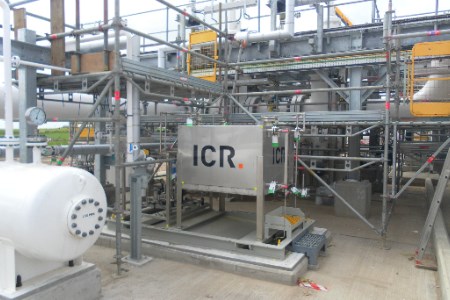
during registration.





The Commission of the Canada Energy Regulator concluded that if long-term contracting were allowed on the Canadian Mainline, access to the pipeline would change suddenly and dramatically. Overall, Western Canadian oil producers could suffer too many negative consequences.
For almost 70 years, the Enbridge Canadian Mainline has been moving oil across Canada. It’s the longest oil pipeline in Canada, stretching from Alberta to the US border in Manitoba and re-entering Canada in Ontario. The Mainline connects Canadian producers to refineries and other pipelines in both Canada and the US. It also ships the most petroleum products of any Canadian pipeline at about three million barrels each day. That’s around 70% of Canada’s total ability to ship oil from Western Canada to market.
This means that oil from almost all producers in Western Canada is regularly shipped on the Mainline.
Application
Pipeline capacity in Western Canada has been limited for years, with shippers competing for space to move their product. Enbridge highlighted that additional challenges resulting from the energy transition have caused an uncertain environment for oil producers.
The company said its proposal would decrease risks for itself and its customers given uncertainty in Canada’s oil industry.
In the application, Enbridge applied for two main things: to be able to enter into long-term shipping contracts and a new tolling methodology for the Mainline. For the new contracting proposal, shippers could reserve up to 90% of the pipeline’s capacity for a minimum of eight years to a maximum of 20 years. This model would leave as little as 10% available for monthly shipments for those without a long-term contract. If approved, it would have been a significant change for the industry since Enbridge has used a 100% unreserved model since it began operating.
For the tolling request, Enbridge was trying to establish pricing to go along with the new service. For those with contracts, the longer the contract and larger the volume, the greater overall discount companies would receive. Those without long-term contracts would pay more.
An important part of the application was whether Enbridge’s proposal met its obligation for “common carriage.” The CER Act says that an oil pipeline company must provide service to anyone who wants to ship their products on the pipeline, within reason.
Enbridge proposed an open season (where potential shippers would have the opportunity to sign-up for long-term contracts) as a transparent way to offer the long-term contracts. Along with the 10% uncommitted capacity, Enbridge argued this would meet its common carrier obligation.
Decision
The Commission considered many factors while making its decision. It found that, in this case, having up to 90% of pipeline capacity locked into long-term contracts would dramatically change access to the pipeline. The Commission also found that negative impacts would affect certain groups more than others, so it could not support the overall application.
Similarly, the Commission felt that the overall tolling framework would excessively favour shippers that signed long-term contracts. In the end, the Commission did not approve either the tolling or the contracting portions of the application.
The Commission of the Canada Energy Regulator did not approve Enbridge's application to enter into long-term contracts on the Canadian Mainline pipeline for 90% of the system's capacity. The Commission noted that the proposal would have caused a foundational shift in oil transportation, leaving less than 20% of total pipeline capacity out of Western Canada for monthly oil shipments.
The Mainline is Canada's largest oil pipeline system, moving over three million barrels per day of petroleum products to market. The pipeline provides approximately 70% of the total oil pipeline transportation capacity out of Western Canada. In part, several parties supported the application because the pipeline's demand has exceeded available capacity over the past few years. Enbridge highlighted that firm contracts would give them more predictable access to the pipeline.
Others, including many Canadian oil producers, argued that the proposed change would worsen the existing capacity constraints and have other negative consequences such as lower oil prices.
After considering the evidence, the Commission found that the proposal would dramatically change access to the Mainline. The Commission noted that while certain companies would benefit from long-term stability, others would lose access to the pipeline. This would not meet the CER Act’s common carriage obligation. This means that a pipeline company must provide service to anyone who wants to ship their products on the pipeline, within reason.
The Canadian Mainline will continue to operate on existing interim tolls.
Quick Facts
Enbridge filed the Canadian Mainline Contracting Application on 19 December 2019.
This is the first time a major, existing Canadian oil pipeline applied to switch a large portion of its capacity to long-term contracts, in the absence of a major proposed project.
Along with Enbridge, 39 intervenors participated, and 28 parties sent letters of comment. Participants included refiners, producers, and integrated companies from Canada and the US and the Government of Saskatchewan.
The Canadian Mainline, which includes approximately 6600 km of CER-regulated assets, originates in Edmonton, Alberta. It extends east across the Prairies and crosses the Canada-US border near Gretna, Manitoba, where it joins the Lakehead System.
In addition to protecting the safety of Canadians and the environment, the CER has been tasked with building a regulatory system that enhances Canada’s global competitiveness.




Comments